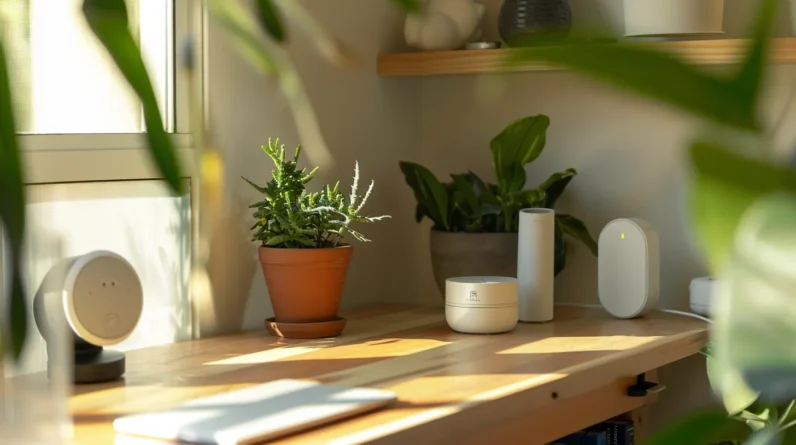
When we set up our smart security home systems, we often overlook critical mistakes that can compromise their effectiveness. We need to assess our home’s specific security needs, plan and research thoroughly, and choose the right equipment for our needs. Poor placement of cameras and sensors, failing to secure our systems from cyber threats, and neglecting regular testing and maintenance can also put our homes at risk. By understanding these common pitfalls, we can design a more robust and reliable system that safeguards our homes and families, and learn how to steer clear of these mistakes from the start.
Not Assessing Your Home’s Specific Security Needs
Before investing in a smart security system, we must take the time to assess our home’s specific security needs, as a one-size-fits-all approach can leave vulnerabilities unaddressed. We need to identify the most critical areas of our home that require protection, such as entry points, windows, and doors. We must also consider the layout of our property, including potential hiding spots and blind spots. Additionally, we should evaluate the local crime rates and common types of break-ins in our area. By understanding our home’s unique security requirements, we can design a tailored system that effectively mitigates risks and provides maximum protection. A thorough assessment enables us to prioritize our security needs and allocate resources effectively.
Insufficient Planning and Research
While designing a smart security home setup is an exciting project, diving in without sufficient planning and research can lead to a flawed system that compromises our safety. We must invest time in understanding the various components, their integration, and potential vulnerabilities. A thorough assessment of our home’s architecture, network infrastructure, and power dynamics is essential. We need to evaluate factors such as sensor placement, camera coverage, and door lock compatibility to create an effective security mesh. We should also research different communication protocols, such as Zigbee, Z-Wave, or Bluetooth, to determine which best suits our needs. Without proper planning and research, we risk deploying a system that can be easily exploited or suffers from blind spots, ultimately undermining our security.
Choosing the Wrong Equipment for Your Needs
Our smart security home setup’s success hinges on selecting the right equipment, but with the myriad options available, we can easily end up with a misaligned system that fails to meet our needs. We must assess our specific requirements, considering factors like the size of our home, number of occupants, and potential entry points. We should also think about the types of threats we want to protect against, such as intruders, fire, or environmental damage. Only then can we choose equipment that aligns with our needs, such as door and window sensors, motion detectors, or video cameras with night vision and motion tracking. A tailored approach guarantees our equipment works in harmony to provide effective security and alerts us to potential issues before they escalate.
Poor Placement of Security Cameras and Sensors
The effectiveness of our smart security home setup can be severely compromised by poorly placed security cameras and sensors. We must consider the layout of our home, including blind spots and areas of high foot traffic, when deciding where to install these devices. Cameras should be positioned to capture clear footage of entry points, such as doors and windows, while sensors should be placed in areas where intruders are likely to pass through. We should also guarantee that cameras and sensors are not obstructed by furniture or other objects, which can limit their effectiveness. By strategically placing cameras and sensors, we can maximize our system’s ability to detect and deter potential threats, providing us with greater peace of mind and a more secure home.
Not Securing Your System From Cyber Threats
Securing our smart security home setup from cyber threats is just as crucial as protecting our home from physical intruders. We must take proactive measures to safeguard our system from hacking, malware, and other cyber threats. This includes changing default passwords, using strong encryption, and keeping our system’s firmware and software up to date. We should also implement a robust firewall and intrusion detection system to monitor and block suspicious activity. Moreover, we must limit access to our system to authorized users and devices only, using secure protocols such as two-factor authentication. By taking these measures, we can substantially reduce the risk of a cyber breach and protect our smart security home setup from cyber threats.
Failing to Test and Maintain Your System Regularly
While investing in a smart security home setup can provide a high level of protection, it’s only effective if we test and maintain it regularly. We need to guarantee that all components, including sensors, cameras, and door locks, are functioning correctly and communicating with the central hub. Regular testing helps identify and resolve connectivity issues, faulty devices, and software glitches. We should also perform routine maintenance tasks, such as updating firmware, cleaning camera lenses, and replacing batteries. Neglecting these tasks can lead to system failures, false alarms, and compromised security. By prioritizing regular testing and maintenance, we can optimize our smart security home setup’s performance, prevent potential issues, and guarantee our home and family remain protected.
Not Considering Integration With Other Smart Home Devices
When designing a smart security home setup, it’s essential that we consider integration with other smart home devices to create a seamless and efficient system. We need to guarantee that our security cameras, doorbells, and sensors can communicate with our smart thermostats, lights, and door locks. This integration enables us to automate various scenarios, such as turning on lights when motion is detected or locking doors when we leave the house. Without integration, our smart security devices may not be able to share critical information, resulting in a fragmented and ineffective system. By considering integration upfront, we can avoid compatibility issues and create a robust, interconnected smart home system that enhances our security and convenience. This requires careful planning and selection of compatible devices.
Conclusion
We’ve outlined the common pitfalls to sidestep when setting up a smart security system for our homes. By avoiding these missteps, we can guarantee our security setup is more than just a facade – it’s a robust fortress that safeguards our havens. Like a game of chess, securing our homes requires strategic planning, anticipating potential vulnerabilities, and making calculated moves to outmaneuver potential threats, ultimately checkmating the risks that imperil our sense of safety.







